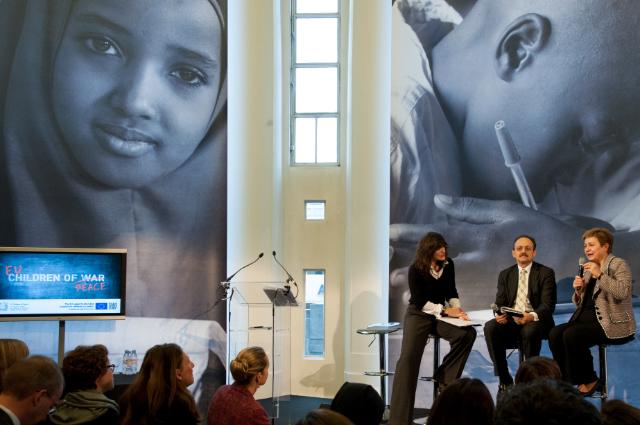EU Children of Peace: a lasting legacy of the Nobel Peace Prize supporting thousands of children worldwide
EU News 478/2013
IP/13/1115
Brussels, 20 November 2013
The European Commission will support 80 000 children affected by conflict through new humanitarian projects announced today which are supported by the 'EU Children of Peace' initiative. The European Commission established 'EU Children of Peace' last year after it was honoured with the Nobel Prize for Peace, investing the Prize money in helping children who are living in conflict and post-conflict environments. It will continue to make a difference for even more children in the year ahead.
(...)
Over the past year, the EU Children of Peace initiative reached more than 28 000 children in Pakistan, the Democratic Republic of Congo, Ethiopia, Columbia, Ecuador and Syrian refugee children in Iraq. Thanks to the generosity of Europeans and the hard work of humanitarian organisations, we provided schools, child-friendly spaces, psychological support, school materials and uniforms. This kept more boys and girls in education, saved them from recruitment as child soldiers and taught them about their rights.
EU Children of Peace continues in 2014: the European Commission will increase the available funds from €2 million in 2013 to €4 million for next year. More than 80 000 children affected by war will benefit from this second round of the EU children of Peace initiative. Humanitarian projects will be carried out by nine humanitarian organizations who will help girls and boys in South Sudan, the Democratic Republic of Congo, Chad, the Central African Republic, Somalia, Afghanistan, Iraq, Myanmar, Colombia and Ecuador.
Source and additional information:
http://europa.eu/rapid/press-release_IP-13-1115_en.htm?locale=en
Kristalina Georgieva Date: 20/11/2013 Reference: P-024471/00-13 (C)EU, 2013 URL














